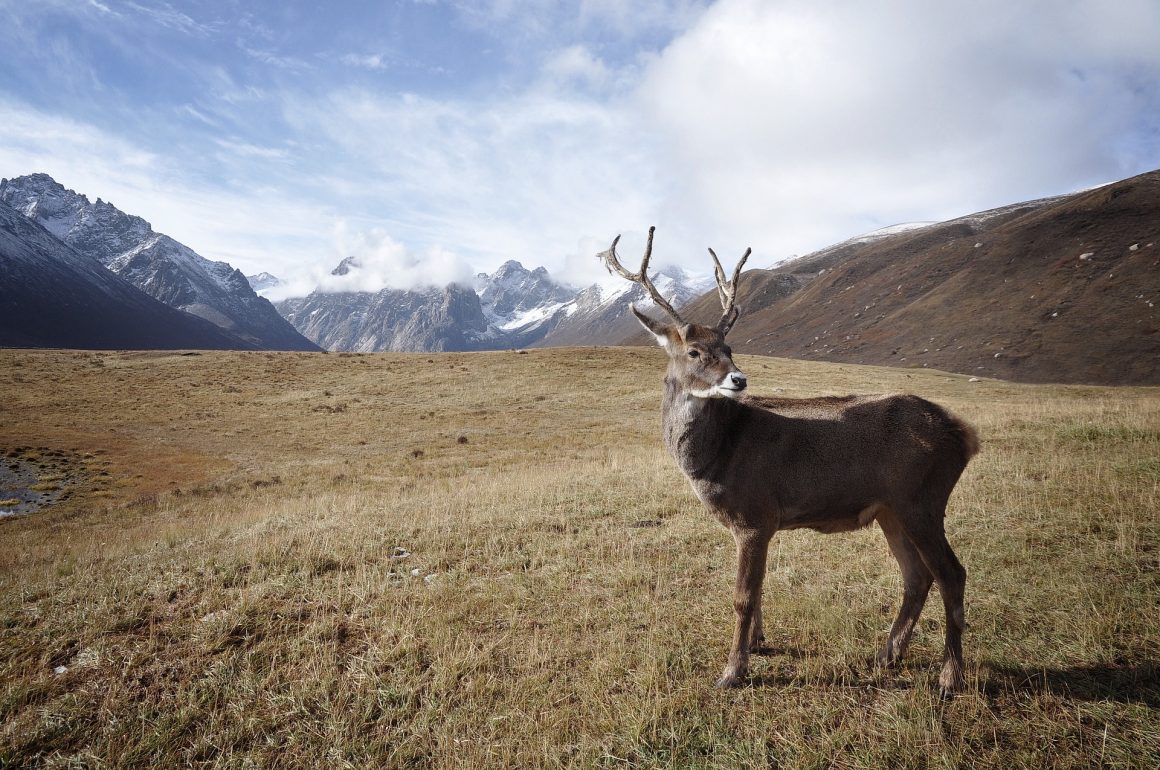
Wildlife Conservation Showcase: Musiani Lab
By Holly Hastings, December 12 2019 —
The wildlife conservation community considers the caribou population one of the most crucial issues at the moment, explaining that a whole landscape and ecosystem depend on the caribou migration while industrialization, roads and disturbance are cited by conservationists as the main threats to their population. Caribou are also said to play a vital role for Northern communities, crucial to their survival. Many Indigenous groups have strongly advocated for, and worked towards, protecting the habitat of certain caribou populations.
The Musiani Lab of the Biological Sciences department at the University of Calgary adds a perspective to the mix that is slightly different and therefore complementary to the context of conservationists. Caribou are a declining, keystone and federally-protected species — up to 50 per cent of the population is lost every eight years. Marco Musiani explains the caribou conservation project in a way that makes it easy to understand.
“There are populations of animals, and plants too, that have unique characteristics,” Musiani said. “If we discover a population that has this unique characteristic and they are declining, we will know what we are losing forever, because those characteristics can never be reinvented. Not only within Caribou but all other wild animals, the key to conservation is variation within the species.”
The more intraspecies variation, the more opportunity for adaptation to new and changing environments.
Jessica Theoret, a Master’s candidate in the Musiani Lab, categorizes migratory behaviour in caribou. Theoret’s work involves graphing movement behaviour and assigning a behaviour based on distribution points on a graph using a method called “Net Squared Displacement.” This method categorizes caribou populations at the individual level for two different types of caribou. Barren-ground caribou in the Tundra practice migration mostly out of necessity due to the changing seasons, and two ecotypes of Woodland caribou subspecies are assumed to be generally a non-migratory species. Part of the project includes challenging and testing these assumptions.
Theoret explains the caribou conservation initiative as “an iconic umbrella species that are very important to boreal forests in Western Canada and across Canada. Differentiating between different types of caribou and looking for different genetic markers of caribou can help conservation initiatives and lead to a long-term goal of policy changes, because we want to preserve as much intraspecies biodiversity as possible in terms of morphology and behaviour so that with concerns like climate change we can hope they will be more adaptable.”
Maria Cavedon, a PhD Candidate in the Musiani Lab, focuses on studying caribou genomics using a new kind of molecular marker named Single-Nucleotide Polymorphism (SNP).
“The adventures of studying this marker (SNP) is concerned with looking at which one of them is under natural selection,” Cavedon said.
Cavedon is studying this marker to see if there are markers on the selection in a population, with the ultimate goal being to see if there are genetic mutations that are specific caribou behaviours in ecology and to see if there is a correlation between migratory behaviour and genetic mutations in caribou.
The Musiani Lab uses large animals as their entry point into the world of wildlife conservation. In addition to caribou, Musiani also has other graduate students focused on projects on wolverines.
When asked why the lab focuses on large animals, Musiani said that any entry point is legitimate.
“Some people use amphibians, some people use bacteria, but the focus on wildlife is also important from a human dimension point of view, because people understand ecology better through the eyes of a wolf than through the eyes of bacteria,” he said.
A major way that the Musiani Lab contributes to wildlife conservation outside of academia is attending conferences to spread findings and knowledge. Theoret and Cavedon recently attended the North American Congress for Conservation Biology in Toronto where they presented their research. Theoret also volunteers for landscape restoration, surveying fish on the Elbow River and helping out fellow grad students in their bat capturing research.
With a significant focus on earth conservation in the media today, now appears to be an ideal time for conservationists such as those at the Musiani Lab to stress that the planet is not only in danger for humans, but also for all other living organisms that depend on it.
